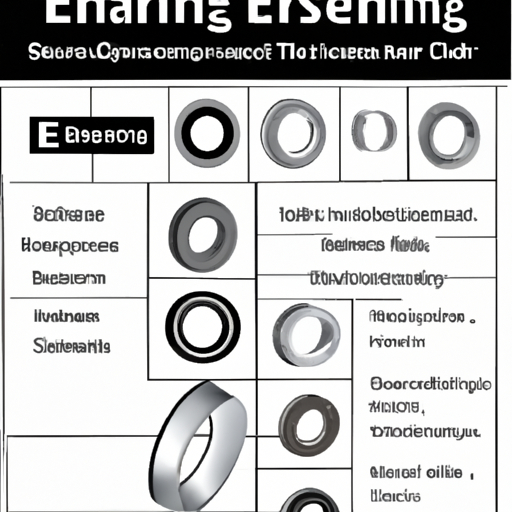The Essential Guide to Bearings: Everything You Need to Know

Introduction
Bearings are an essential component in countless machines and mechanical systems, playing a crucial role in enabling smooth and efficient motion. From cars to airplanes, to industrial machinery, bearings are everywhere, quietly doing their job to keep things moving. In this article, we will explore the different types of bearings, how they work, and their importance in various applications.
What are Bearings?
Bearings are mechanical components that are used to reduce friction between moving parts in a machine. They are designed to allow one part to move relative to another with minimal resistance, thereby enabling smooth and efficient motion. Bearings come in a variety of shapes and sizes, with each type suited to specific applications.
Types of Bearings
There are several types of bearings, each with its own unique design and functionality. Some of the most common types of bearings include:
1. Ball Bearings: Ball bearings are perhaps the most widely used type of bearing, featuring a series of balls held in a ring-shaped raceway. These bearings are known for their high radial and axial load capacity, making them ideal for applications that require high-speed rotation.

2. Roller Bearings: Roller bearings are similar to ball bearings but use cylindrical rollers instead of balls. This design allows roller bearings to handle heavier loads and provide better shock absorption.
3. Thrust Bearings: Thrust bearings are designed to handle axial loads, allowing them to support heavy loads in one direction. These bearings are commonly used in applications such as automotive transmissions and machine tools.
4. Plain Bearings: Plain bearings, also known as sleeve bearings, are simple bearings that consist of a smooth surface that slides against another surface. These bearings are ideal for applications that require low friction and noise levels.
How Do Bearings Work?
Bearings work by reducing friction between moving parts in a machine. When two surfaces rub against each other, friction is generated, which can lead to wear and tear over time. Bearings help to minimize this friction by providing a smooth surface for the parts to move against. This not only reduces wear on the parts but also allows for smoother and more efficient motion.
Importance of Bearings
Bearings play a crucial role in the functionality of countless machines and mechanical systems. Without bearings, machines would quickly wear out and become inefficient, leading to costly repairs and downtime. Bearings help to extend the lifespan of machines, improve their performance, and reduce maintenance costs.
Applications of Bearings
Bearings are used in a wide range of applications across various industries. Some common applications of bearings include:
1. Automotive: Bearings are used in car engines, transmissions, wheels, and suspension systems to enable smooth and efficient motion.
2. Aerospace: Bearings are essential components in aircraft engines, landing gear, and control systems, where reliability and precision are critical.
3. Industrial Machinery: Bearings are used in industrial machinery such as conveyor belts, pumps, and turbines to ensure smooth operation and reduce maintenance requirements.
4. Medical Devices: Bearings are used in medical devices such as MRI machines and surgical equipment to provide precision and reliability.
Conclusion
In conclusion, bearings are essential components in machines and mechanical systems, enabling smooth and efficient motion while reducing friction and wear. With various types of bearings available for different applications, it is important to choose the right type of bearing based on the specific requirements of the machine or system. By understanding the importance of bearings and how they work, we can appreciate the crucial role they play in keeping our world moving.




 13869596835
13869596835